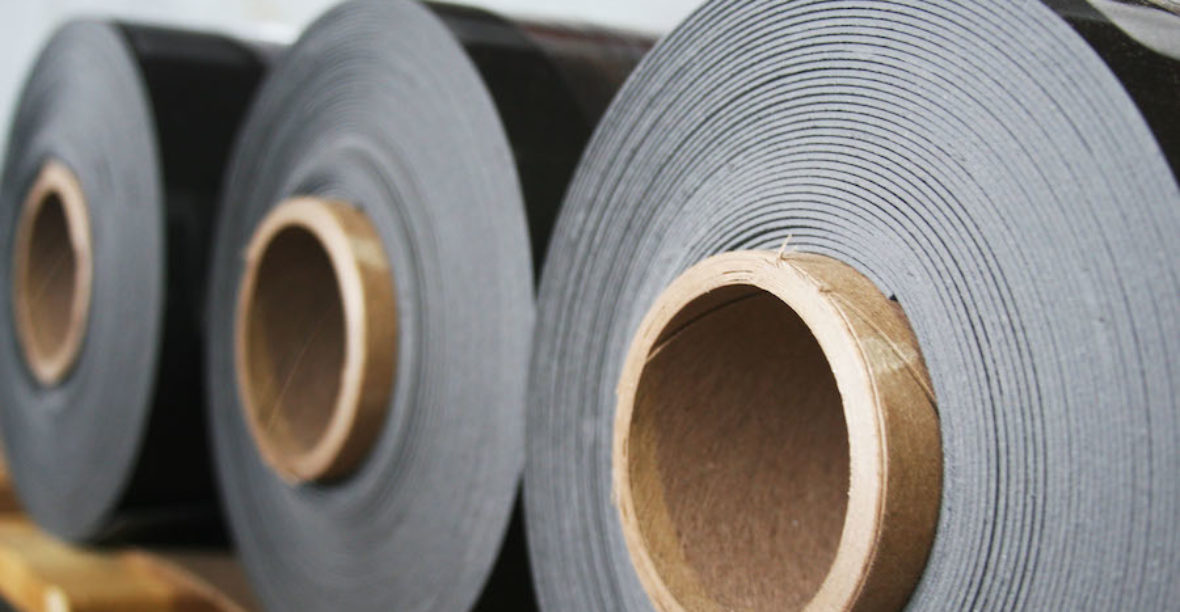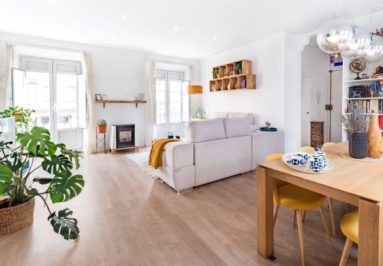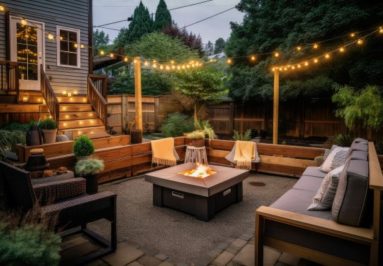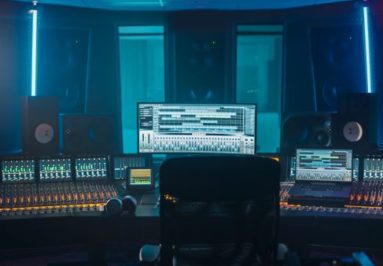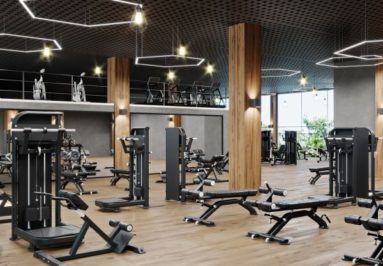With so many types of mass loaded vinyl out on the market, it can be a tall order to select the brand and MLV type that is best for your project. Most sources are simply resellers, and don’t even manufacture the vinyl barriers themselves. To make matters worse, there are trade names to navigate (often private labeling vinyl from the same plant) and loads of misleading marketing info, with outlandish STC claims. We’ve broken down the most common variables for Mass loaded vinyl below. By defining your requirements and understanding the pros and cons of various additives, you can select the best mass loaded vinyl for your project.
Often the first step is to determine what your target STC is. What STC does your wall need to achieve? Often times it’s 45 in office buildings, 50-55 in apartments and condos, and 65+ for proper soundproofing of theaters and music studios.
What are the types of Mass Loaded Vinyl?
Mass loaded vinyl comes in lots of thicknesses and weights. These are commonly between 0.5 pounds per square foot, and 2 pounds per square foot. The most common areal weight for Mass Loaded barriers is 1.0 lb/sf. While the weight changes, the density seldom does, so in reality the thickness changes as well. 1 psf Mass Loaded Vinyl is 1/8″ thick, while 2 psf is 1/4″ thick.
MLV is produced by extruding a polymer through a screw and chamber at high temperature and pressure. This liquefies the polymer pellets and mixes them with any additives. The most common mass-loading additive is calcium carbonate, although in the past others were used, including lead and barium-sulfate. When the vinyl is properly mixed, it is extruded through a dye, and quickly cools and hardens onto cooling rolls, where it takes its final shape.
Some extrusion lines have a variable dye, allowing for quick changing of MLV thicknesses. Other machines require a full machine-line shutdown, which can result in long lead times for custom thicknesses.
See a Video of How Mass Loaded Vinyl is Made
When it comes to Mass Loaded Vinyl, there are 2 primary polymer bases – PolyVinyl Chloride (PVC) and Ethyl Vinyl Acetate (EVA). PVC is a naturally rigid product (such as vinyl siding on a home), so an additive known as a plasticizer must be added to give it flexibility. Unfortunately, plasticizers break down over time, and they “off-gas” at room temperature, leading to unpleasant odors. EVA membranes, on the other hand, are naturally pliable, and do not require plasticizers.
Other additives are included for strength, such as the carbon fiber mesh for exterior applications (known as reinforced MLV), or UV additives for applications that are exposed to the sun for long durations.
Best uses of Mass Loaded Vinyl?
While stacking drywall layers may get you to an STC 40-45 range, Mass Loaded Vinyl is a great option if STCs of 50 or higher are needed. They are generally cheaper than multiple layers of drywall, much faster to install, and are significantly more effective at blocking low-frequency noise. Drywall is very bad at low frequencies, so even when STCs are acceptable, the performance in the field generally appears much lower, since the low-frequency noise is audible
In particular, MLV should be strongly considered when STC 50 is needed on single stud walls. Also, projects with high walls and large jobs with constant ceiling height are excellent prospects, since MLV can be custom cut to length, reducing horizontal seams and therefore installation timeframes.
Approximate Prices of Mass Loaded Vinyl?
This is dependent on a number of factors, but boils down to a few things: Volume and Thickness. 1 lb/sf MLV can retail at about $3-4/sf, and can be as cheap as $0.60/sf at large quantities. Meanwhile 2 pound Mass Loaded Vinyl (2# MLV or 2 lb/sf MLV) retails at around $3/sf, and large quantities may sell closer to $2/sf. Installation of Mass Loaded Vinyl should cost around $1/sf for very small jobs, and as little as $0.15/sf for larger jobs.
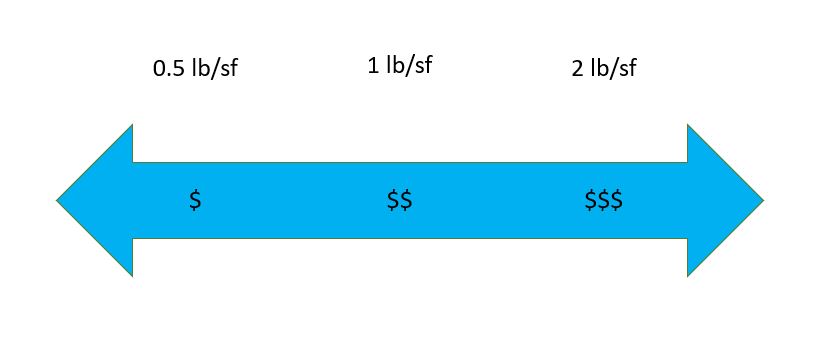
In short, Mass Loaded Vinyl can be a very competitive option for soundproofing your space if the cost and STC align with your requirements. Remember to always request relevant acoustic lab test data and ensure that the MLV you’re buying is cost-competitive with others in the market place. PVC-based MLV should be used for short-term projects, since it is more likely to break down over time. Meanwhile, use reinforced MLV for long, hanging rolls. Lastly, consider heavier duty MLV rolls for use around mechanical rooms and areas that require significant STC improvements.
Where to Buy MLV Vinyl Barrier?
- There are only a few manufacturers in the United States, due to the energy-intensive processes and costs associated with extruding mass loaded vinyl. Often-times it must be purchased online and shipped directly to the client’s site. There are some stocking distributors along the east coast, but generally not in volumes large enough for significant projects. Soundproof Direct stocks approximately 30,000 square feet of Mass Loaded Vinyl, most of it in North Carolina and Florida.
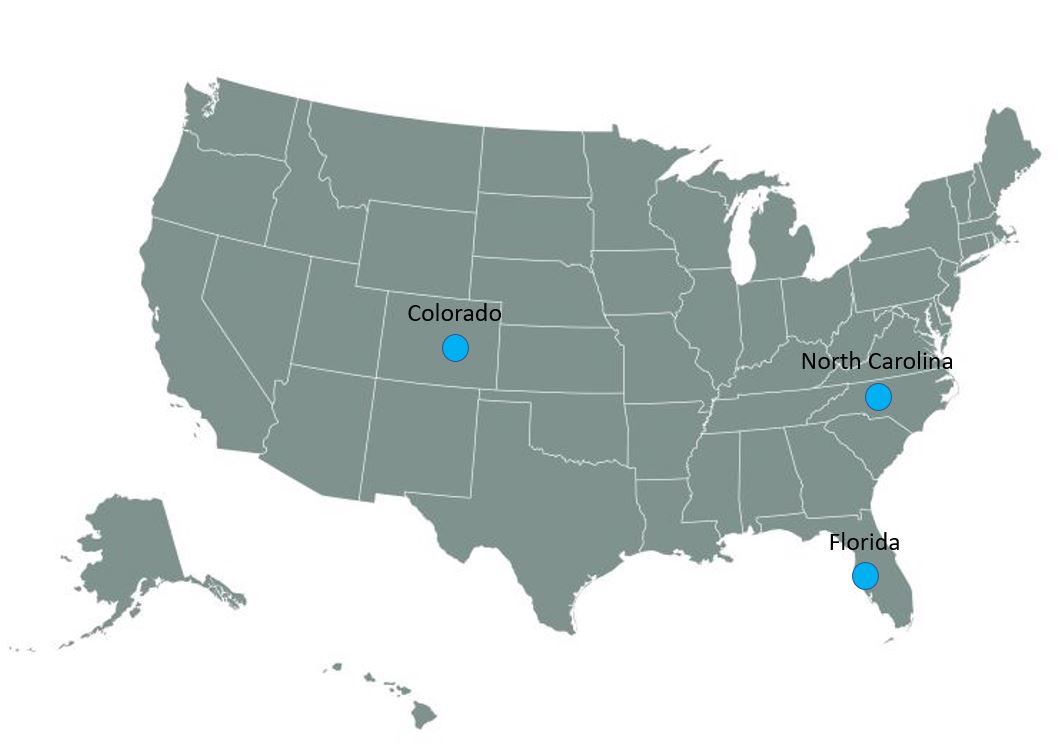
Mass Loaded Vinyl In a Nutshell – How to Use it to Best Soundproof Your Space
Mass Loaded Vinyl can be a very effective and flexible material to block unwanted sound when used correctly. On studio projects, movie theaters, and residential applications it can improve the STC of a wall and help attenuate excess noise. Contact a soundproofing professional if you have unique requirements for your MLV – otherwise, standard 1# Mass Loaded Vinyl can be purchased directly and installed on your project in no time.
- Mass Loaded Vinyl comes in 1/2 lb, 1 lb, and 2 lb/sf increments. These range from 1/16″ thick to 1/4″ thick.
- MLV is best hung directly on studs, but can be installed on top of existing drywall when needed. It will increase the STC of the wall by 7-11 points on metal studs, and 4-6 points on wood studs.
- Mass Loaded Vinyl is stapled into wood studs, or screwed into metal studs using pan-head self-tapping screws.
- EVA-based Mass Loaded Vinyls are better at withstanding moisture and temperature, and do not degrade over time.

